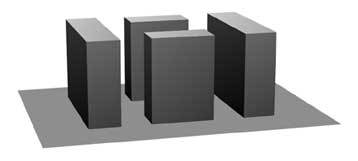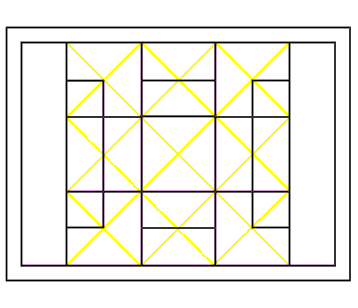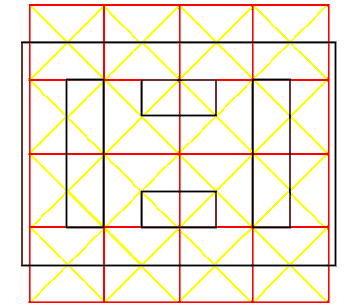| << UbuWeb |
| Aspen no. 5+6, item 22 |
|
|
|
Drawings for “The Maze”
To make a model of the sculpture, see items 7, 8, 9, 10, 11, 25, 26 and 27 |
|
THE MAZE / TONY SMITH |

Launch QuickTime 3D model (1.7 MB) |
|
Click on the image above to view a QuickTime model of "The Maze" that you can rotate and tilt with your computer's mouse. "The Maze" was exhibited at Finch College Museum in May of 1957. The dimensions of the modules were 6 feet 8 inches tall by 30 inches deep by 10 feet wide (the two large modules) or 5 feet wide (the two smaller modules). |



|
|
As is clear from the drawings, "The Maze" was originally designed for a particular space. Thus the pathways around the pieces as well as through it are an integral part of the design. For this reason it is a labyrinth rather than a monument. I did not think of the symmetry of the piece as I was doing it, but I happened to notice when making the drawing that the central part is a five-foot square; the part including all the passages is a ten-foot square; then if you take the extension along the room, it is a fifteen-foot square. So it is a lot of expanding squares. On the other hand if you take different divisions, for instance if you take all these squares and carry them through, they make a grid which interpenetrates— the two sets of grids interpenetrate one another. In a certain sense it is a labyrinth of the mind. You can see that it becomes quite complex, but at the same time everything falls in very, very simply. —Tony Smith The Maze was designed for the exhibition Schemata 7, at Finch College Museum, May 1957. The above statement has been adapted from the catalogue. The actual dimensions of the modules were 6'8" by 10' by 30" (two modules) and 6'8"by 5'by 30" (two modules). The models have been scaled down to fit in this box. The models may be set up standing free on neutral ground. They should be set up in accordance with the plan indicated in the drawing. Those who wish to reproduce the work in its original dimensions (in metal or wood) may do so. The individual pieces may be cut from the enclosed cardboards by a matte-knife (e.g. the General 850 available at any art supply store) guided by a metal ruler. The parts should be attached as indicated i.e. the appropriate edges should be opposed to the grey areas. (Elmer's Glue All may be used). "White" edges should be darkened with ink or water color. The drawing below may serve as a guide. 
|
|
Original format: Single sheet, 24 by 8 inches, folded into thirds. |
|
|
|
|
|
|
|